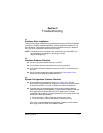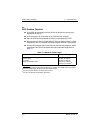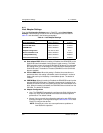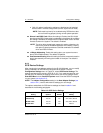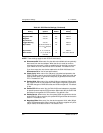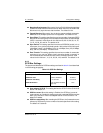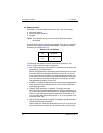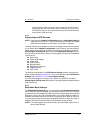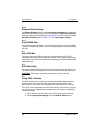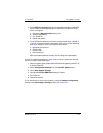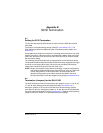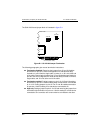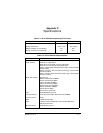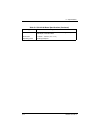
DC8151101-00 C B-1
Appendix B
SCSI Termination
B.1
Setting the SCSI Termination
The first and last physical SCSI devices on each end of the SCSI bus must be
terminated.
Termination is set automatically through Fast!UTIL (see section A.2.1). The
QLA12160 board offers the additional option of terminating with jumpers (see
section B.2).
Some cables have multiple connectors for connecting several devices to one of the
board’s connectors. If the board uses a connector that is not on either end of the
cable, then the board is not at one end of the SCSI bus and you need to change
the termination setting.
The following sections describe how to set termination for the QLA12160 board.
The text and illustrations describe multiple SCSI devices daisy chained onto a single
connector on the board. When daisy chaining narrow and wide SCSI devices,
always have a wide SCSI device at the end of the chain.
NOTE: QLogic recommends using external termination in system configurations
with multiple initiators that share the same SCSI bus (such as in Microsoft
cluster configurations). External termination ensures proper device
operation during power cycles. When external termination cannot be
provided, terminate all host bus adapters using jumpers (see section B.2).
B.2
Termination (Jumpers) for the QLA12160
The QLA12160 board comes from the factory with jumpers on pins 1–2 of J5, J6,
J7, and J8; these settings allow automatic termination (see section A.2.1).
Moving the jumpers on J5 and J6 on the QLA12160 board manually sets the
termination for port one. Moving the jumpers on J7 and J8 on the QLA12160 board
manually sets the termination for port two (see figure B-1). Settings made with these
jumpers override all Fast!UTIL or automatic termination settings.



